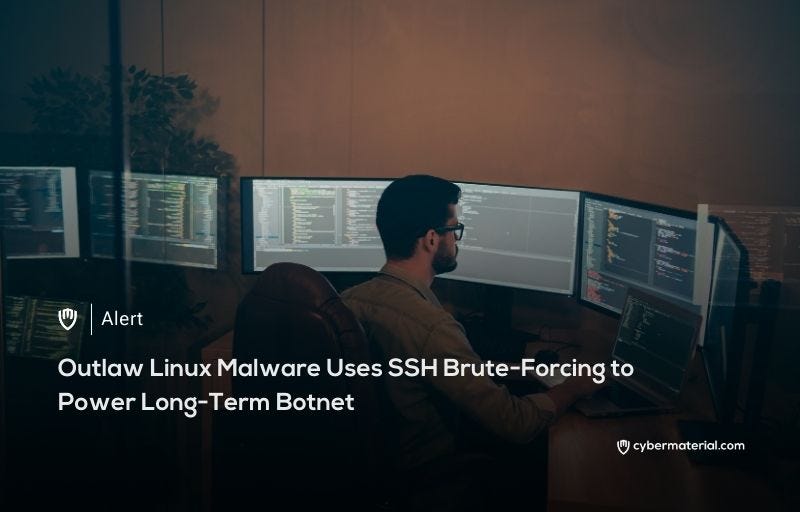
Outlaw is a persistent Linux malware known for maintaining long-term botnet activities despite its simple design. The malware primarily uses SSH brute-forcing techniques to access systems with weak or default credentials, then spreads through cron-based persistence and modified cryptocurrency miners. Although Outlaw lacks advanced evasion mechanisms, it continues to propagate by leveraging its modular design and worm-like characteristics. Researchers have observed the malware’s ability to function with minimal intervention from the attacker.
The infection process follows a multi-stage chain starting with SSH brute-forcing, which is carried out by a component called “blitz.” Once the malware gains access, it deploys a package containing scripts and binaries that initiate the infection. The primary script, tddwrt7s.sh, sets the infection in motion by placing components in hidden directories, making it harder to detect.
Outlaw then establishes persistence through cron jobs and SSH key manipulation, locking configuration files to prevent tampering.
Outlaw’s components include a modified XMRig miner for Monero mining, an IRC-based backdoor known as STEALTH SHELLBOT for remote control, and the blitz brute-forcer for automated attacks. The malware’s ability to spread laterally within local subnets using SSH brute-forcing is a key characteristic of its worm-like propagation. This ensures that Outlaw rapidly infects more systems without direct input from the attacker.
Additionally, communication with the command-and-control server is maintained by binaries like kswapd01 and kswapd0.
Despite its use of simple techniques, Outlaw remains effective at sustaining botnet operations over time. Its reliance on basic tools allows it to avoid detection by traditional security measures. However, attackers’ occasional manual intervention in the malware’s operations, as seen in honeypot experiments, suggests the need for periodic checks. The malware’s predictable behavior, including SSH brute-forcing and mining activity, offers defenders opportunities for detection. Understanding Outlaw’s tactics can help security teams implement targeted detection and mitigation strategies for Linux systems.
Reference:
The post Outlaw Linux Malware Uses SSH Brute-Forcing first appeared on CyberMaterial.


